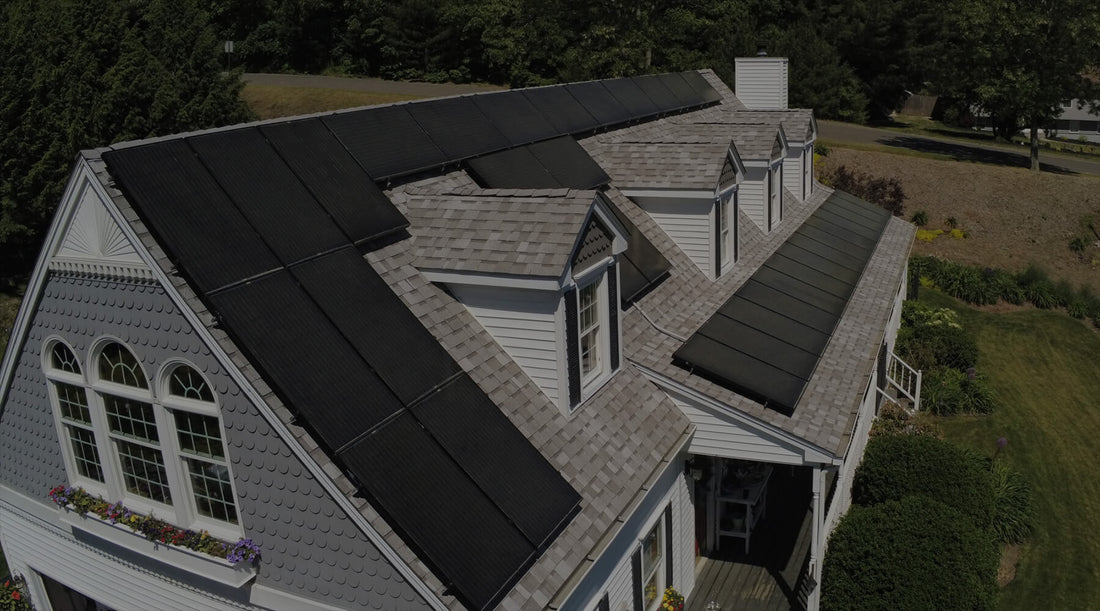Estimated reading time: 4 minutes
The solar industry is ripe with abusive pricing models.
For most companies, the price they're charging is directly tied to the benefit solar offers. In areas with more sun and/or higher electricity rates, traditional solar companies charge more. . . even if their costs are the same.
These abusive companies price as high as they possibly can while still saving you 10–15%. This approach makes the customer feel like they're being offered a win-win opportunity, but in reality, people are way overpaying for solar.
Picture this: If GM was charging twice as much for the same 4x4 truck in snowy Salt Lake City, UT as they charge in warm and sunny Phoenix, AZ, consumers would 1) be outraged and 2) probably go to Arizona to buy their truck.
The pricing difference isn't justifiable—the product is the same and the shipping from Detroit isn't significantly different.
While most would agree that the truck example is clearly unfair, this discrepancy happens ALL THE TIME in solar. Unfortunately, companies take advantage of local conditions.
At Project Solar, we believe in flat pricing—the same pricing for all. We don't manipulate our pricing based on your state incentives or your high utility rates (looking at you, California).
The truth is, flat pricing is hard. In order to have the same price for all, we had to price based on the lowest denominator. We needed solar to make sense—even in states with the lowest utility costs and mediocre sunshine.
Door-knocking salespeople making $300k/year simply does not work with our goals. To make our flat and fair pricing a reality, we needed a breakthrough in efficiency. We needed the internet.
THIS is how Project Solar was born.
Our Pricing
Unfortunately, there is variability in the raw cost of going solar.
Permit fees vary by locality, and there are many fixed costs such as site design, engineering, and electrical hook-ups. These fixed costs are the same whether you are installing a 3 kW system or a 15 kW system.
These fixed costs, spread out over larger systems, reduce the total amount on a cost per watt basis. So while you can reasonably assume that a bigger system costs more in total, the cost per watt will go down. These are basic economies of scale.
Therefore, to maintain a fair and flat pricing model, we also need to charge customers on a sliding scale where smaller systems are more expensive per watt and larger systems are cheaper. However, the range does not need to be dramatic to offset the relatively low amount of fixed expenses.
Our DIY pricing is simple: Any system larger than 13 kW is priced at $1.80/watt, and small systems begin at $2.10/watt at 4kW (systems below $4kW will have small system size adder).
Anything in between is priced at a sliding scale, so it's equally and fairly proportionate to the upper and lower bounds.
NOTE: These prices per watt reflect what we actually charge and do not take into account state and federal incentives. Those incentives belong to you, are designed for you, and we do not charge more based on them. An average DIY install is less than $1.40/watt after incentives.
Equipment costs are reducing globally as the industry matures, and we update our pricing to reflect the improvements. That being said, pricing has appeared stable in the last 2 years as maturity (pending any technological breakthroughs) seems to have been reached.
The incremental improvements in pricing/efficiency are lower than the missed opportunity costs of going solar now.
For full-service install, we use our DIY pricing as the base and simply add on the EXACT cost we pay our install partners (with whom we have negotiated amazing rates). In most states, this is 50¢/watt, but in a few states (most of New England area), the price is 70¢/watt for installation to adjust for government/union cost impact.

How to Analyze ROI From a Solar Project
We like to focus on a solar project's return on investment (ROI).
Other companies like to make ROI claims that have been calculated in many different ways and often with many assumptions about how utility rates and home values could increase over 20 years.
We determine ROI more simply by calculating as follows:
[year 1's energy cost saving / cost of going solar]
For my house (Project Solar CEO), it looks like this...
That is $1,430.91 saved a year on a $9,655.51 investment. Or a 15% ROI. Pricing is based off utility and PS pricing as of March 2020.
This ROI beats S&P 500 averages, real estate, and most other investments in both total return AND stability. This return doesn't even take into consideration how your home value will increase with a solar system, which conservative estimates place at at least $2.50/watt.
So, let's take this example one step further and say that I plan on moving in 5 years.
Home value increase: 2.5*9,655.51 (system cost) = $24,138.78
When you install solar, you will more than triple your investment in 5 years and basically earn your place amongst the Wall Street elite as a premier money manager! Congrats!
Cost of Batteries w/ Project Solar
In general, we do NOT recommend batteries for the average homeowner. The technology and/or price is simply too high to make financial sense. For most, "net metering" with your local utility company offers a far better return on your investment. If you have low net metering rates (below 3¢/kWh) or if you live in an area of frequent power outages, then batteries may be for you.
To learn more about the pros and cons of batteries, click here. To learn more about net metering, click here.
If you plan to install a backup battery, you will need one Enphase IQ System Controller (in addition to installing the battery itself). If you're interested in installing a battery that won't provide backup, but rather maximize savings on electricity, a System Controller is not necessary, lowering the cost. Learn more about the difference between backup and consumption batteries here.
There could also be added permitting costs depending on jurisdiction. The Enphase IQ System Controller enables you to disconnect from the grid, charge your battery, and power your home from your battery at the same time, taking full advantage of your solar power in the event of an outage.
Important Note: The Enphase IQ System Controller is required for backup battery configurations. In almost all cases, only one System Controller is required for multiple batteries. This means additional backup batteries will not require an additional System Controller, and the pricing will therefore be lower (as stated below).
These prices are before the 30% federal incentives.
| Base Install Rate Default State* | $0.50/watt |
| Base Install Rate for IL,OR,WA* |
$0.60/watt |
| Base Install Rate for CA* |
$0.65/watt |
| Base Install Rate for CT,DC,DE,GA,MA,MD,ME,NC,NH,NY,PA,RI,SC,VA* |
$0.70/watt |
| Site Survey (if you are unable to provide pictures) | $200 |
| Metal Roof | $0.10/watt |
| Roof Pitch ≥ 35° (For CT,CO,DE,GA,MA,ME,NC,NH,NJ,NY,IL,OH,PA,RI,SC,TX,VT and WI projects) |
$0.12/watt |
| Roof Pitch ≥ 30° (for all states not listed above) |
$0.12/watt |
| Flat Roof (<10°) | $0.24/watt |
| Critter Guard | $0.05/watt |
| Attic Run (Shingle) | $0.05/watt |
| Attic Run (Tile) | $0.15/watt |
| 200A/225A Main Panel Upgrade | ≈ $3,000 |
| 400A Main Panel Upgrade | ≈ $5,000 - $15,000 |
| Main Breaker Derate/Install | $300 |
| Add Subpanel/ Subpanel Relocate | $800 |
| Line Side Tap/Load Side Tap | $450 |
| Meter Service Drop + Meter Upgrade | ≈ $500 - $5000 |
| Electric Panel Derate | $300 |
| 4 or more planes | $300 |
| Outside Install Area (Travel Adder) Tier 2 | $1,000 |
| Outside Install Area (Travel Adder) Tier 3 | $3,000 |
| Same Day Install Cancellation | $1000 |
| 4.5kW or less system size | $1,000 |
| Enphase IQ 5P, backup configuration (with System Controller, includes installation) | $8,500 |
| Additional Enphase IQ 5P Battery, backup configuration (without System Controller, includes installation) | $5,500 |
| Enphase IQ 5P, consumption offset configuration (only available with select utilities; includes installation) | $4,500 |
| Additional Enphase IQ 5P, consumption offset configuration (only available with select utilities; includes installation) | $4,500 |
| Tesla Powerwall 3 (includes installation) | $13,000 |
| Additional Tesla Powerwall 3 (includes installation) | $9,500 |
| Enphase CT Consumption Meter (pricing assumes factory wiring as sufficient, otherwise adder will be refunded/re-quoted based on additional work required) | $400 |
*Auto included in the Project Solar quoting calculator if applicable.



